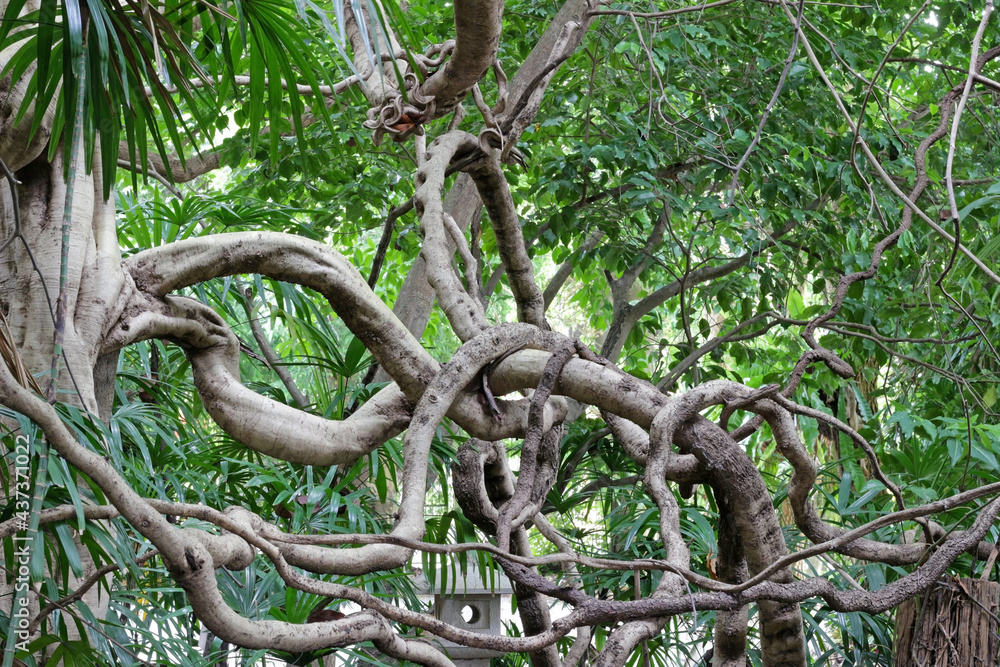Lianas and its Impact on Forest Ecosystem

- 21 Mar 2024
Why is it in the News?
Amidst escalating global temperatures, a pioneering study spearheaded by the University of the Sunshine Coast, Australia, sheds light on an unexpected threat posed by Lianas.
What are Lianas?
- Lianas are long-stemmed, woody vines that have their roots in the ground but use the trunks and branches of trees to climb their way up toward the canopy in order to reach sunlight.
- The term “liana” applies more to this type of lifestyle than to any specific family of plants, as lianas come from a variety of different taxonomic groups.
- They are found in tropical forests all over the world.
- These plants have developed a unique climbing strategy to reach the forest canopy and maximize their access to sunlight for photosynthesis.
- Their flexible stems, adventitious roots, and specialized structures such as tendrils and hooks allow them to twist, twine, and ascend the trunks and branches of trees.
How do Lianas Impact the Forest Ecosystem?
- Lianas can have both positive and negative influences on forest ecosystems, depending on their abundance and the specific environmental context.
Positive Impacts of Lianas on Forests:
- Biodiversity: Lianas enhance forest biodiversity by creating additional habitats, providing food resources, and supporting the life cycles of numerous organisms.
- Insects, birds, mammals, and even some epiphytic plants rely on lianas for food, shelter, and reproductive sites.
- Nutrient Cycling: Lianas play a crucial role in nutrient cycling within forests. By absorbing nutrients from the forest floor and transferring them to the canopy through their stems, lianas facilitate nutrient exchange between different vertical layers of the forest.
Negative Impacts of Lianas on Forests:
- Competition for Resources: High densities of lianas can lead to competition with trees for essential resources like light, water, and nutrients.
- This competition may impede tree growth, reduce seedling establishment, and hinder forest regeneration.
- Impact on Forest Structure and Stability: By increasing the likelihood of tree fall during storms or strong winds, lianas can negatively affect forest structure and composition.
- When lianas grow on tree crowns, they increase the weight and wind resistance of trees, making them more susceptible to uprooting.
- Economic Implications: Lianas can also impact the growth and reproduction of commercially valuable tree species, which has economic implications for forest management and timber production.
- Moreover, liana-infested trees often have reduced timber quality due to distortions in the tree trunk and branches.
- Low Carbon Sequestration: Their lower carbon sequestering capacity compared to trees further exacerbates the threat to carbon storage.
